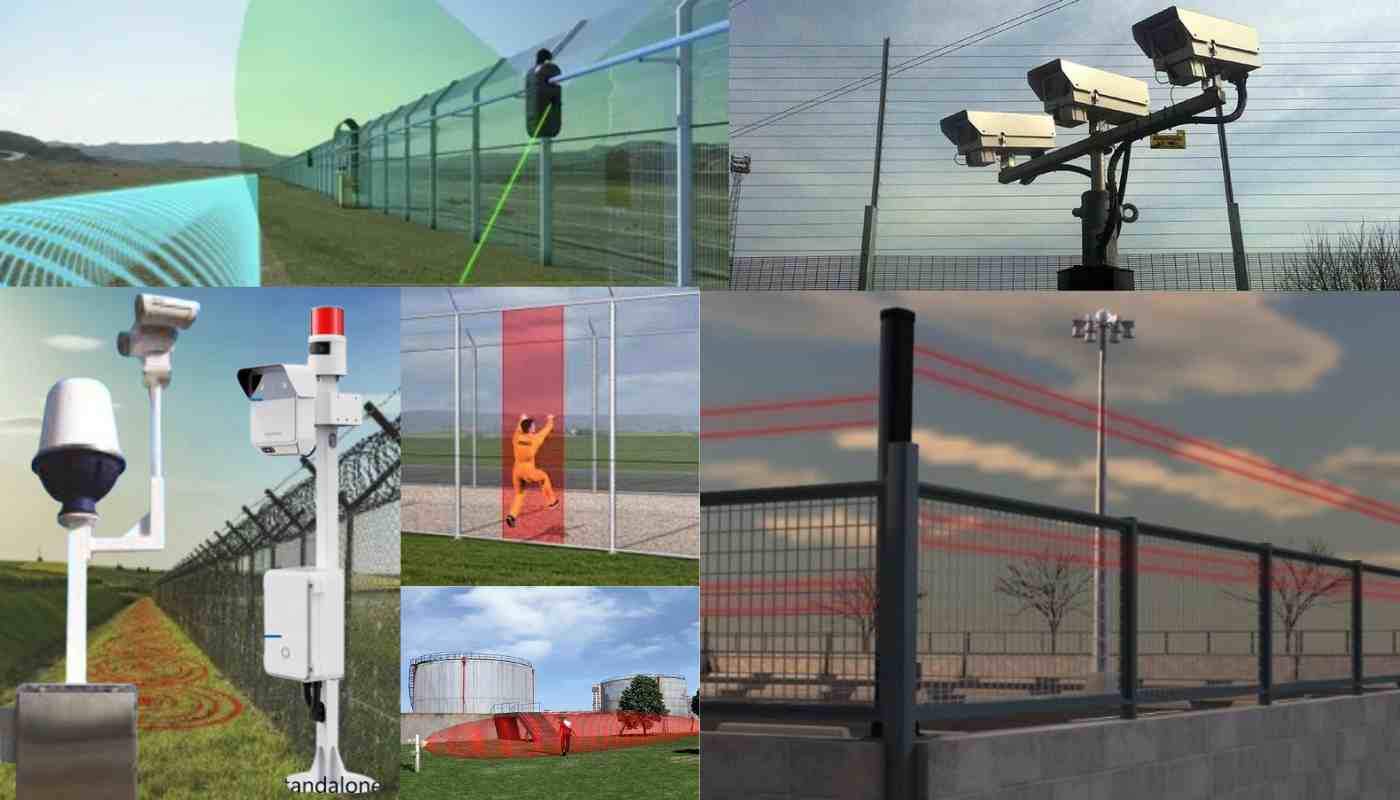Airport Security Perimeter Detection System in UK in 2025
The hustle and bustle of a busy airport is a marvel of modern logistics. Thousands of people, countless flights, and a symphony of activity all converge within a single location. But beneath the surface of this organized chaos lies a constant and critical focus: security. UK Airport Security takes this responsibility very seriously, employing a multi-layered approach to safeguard passengers, staff, and infrastructure.
One crucial element of this security strategy is the Airport Perimeter Intrusion Detection System (PIDS). Think of it as an invisible shield surrounding the airport, constantly vigilant against unauthorized access. In 2024 and beyond, these systems are undergoing a technological revolution, becoming more sophisticated, integrated, and intelligent than ever before.

A Look at PIDS Technologies
The modern PIDS goes far beyond a simple fence and barbed wire. Here’s a closer look at some of the key technologies keeping UK airports secure:
- Millimeter Wave Radar (MMW): These systems use radio waves to detect objects and people hidden from view. Imagine a security guard with X-ray vision, patrolling the airport perimeter 24/7. MMW excels at identifying individuals attempting to scale fences or burrow under them.
- LiDAR (Light Detection and Ranging): This technology uses pulsed lasers to create a 3D map of the surrounding environment. LiDAR can differentiate between harmless animals and potential intruders, significantly reducing false alarms. Think of it as a guard dog with super-sharp night vision, constantly scanning for anomalies.
- CCTV Surveillance: Security cameras are a mainstay of airport security, providing visual verification of alerts triggered by other systems. Facial Recognition can be integrated with CCTV to identify known threats or missing persons. However, ethical considerations and privacy concerns around facial recognition need to be addressed.
- Drone Detection: With the rise of drone technology, new threats have emerged. Drone Detection Systems use radar, radio frequency analysis, and acoustic signatures to identify and track unauthorized drones in the vicinity of the airport.
- Security Fence Sensors: These can include a variety of technologies like vibration sensors embedded in the fence itself, or pressure mats placed beneath the ground. Any attempt to tamper with the fence or breach the perimeter triggers an immediate alert.
The Rise of Perimeter Security AI and Integrated Systems
The future of PIDS lies not just in individual technologies, but in how they work together. Perimeter Security AI is rapidly evolving, using machine learning algorithms to analyze data from various sensors and cameras. This allows for a more nuanced understanding of what constitutes a real threat, drastically reducing false alarm reduction.
Security Integration is another key trend. Imagine a system where a triggered MMW sensor automatically sends footage to security personnel, while simultaneously activating spotlights and deploying drone countermeasures. This seamless flow of information and action is what integrated systems provide.
Security Concerns in a Connected World
While a robust PIDS is essential, security threats can lurk anywhere. Cybersecurity is a growing concern, as hackers target airport systems to disrupt operations or steal sensitive data. UK Security Companies are constantly innovating to stay ahead of these ever-evolving threats.
A Proactive Approach to Security
Security Risk Management is not just about reacting to threats, but anticipating them. Regular vulnerability assessments and penetration testing help identify weaknesses in the system before they can be exploited. This proactive approach is essential for maintaining a robust security posture.
The Evolving Landscape of UK Airport Security
The UK government plays a vital role in setting security standards for airports. Compliance with regulations like those established by the Transportation Security Administration (TSA) ensures a consistent level of security across the country. UK Airport Security authorities are constantly working with industry stakeholders to develop and implement the latest security technologies and best practices.
Smart Airports and Seamless Security
The concept of Smart Airports is gaining traction, with airports leveraging data analytics and automation to improve efficiency and passenger experience. Security is a key component of this vision. Imagine a future where biometric identification allows for seamless passenger screening, and AI-powered systems anticipate and mitigate security threats before they even occur.
A Collaborative Effort for Secure Skies
Airport security is a complex and ever-evolving challenge. UK Airport Security authorities, technology providers, and security companies are all working together to create a layered defense system that is both effective and unobtrusive. By embracing innovation, collaboration, and a risk-based approach, the UK can ensure that its airports remain safe havens for travelers for years to come.
FAQs
What are the latest technologies used in UK airport perimeter security?
In 2024, UK airports are utilizing advanced systems like LiDAR for 3D mapping, millimeter wave radar for hidden object detection, and drone detection systems to counter aerial threats.
How do these systems reduce false alarms?
Perimeter Security AI is playing a key role. By analyzing data from various sensors, AI can distinguish between real threats and harmless triggers, significantly reducing false alarms.
How does the UK government ensure strong airport security?
The UK government sets security standards and works with airports to implement the latest technologies and best practices. They also collaborate with the aviation industry to maintain a high level of security across the nation’s airports.








